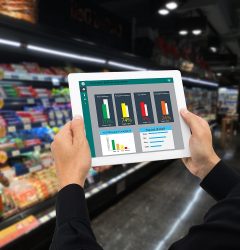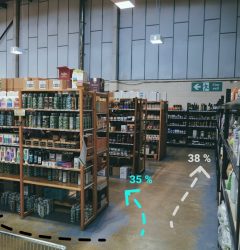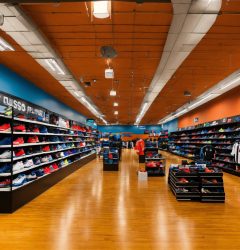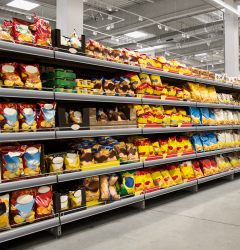Space Management
Leveraging Customer Behavior Insights for Smarter Retail Space Management and Increased Sales
08 Nov
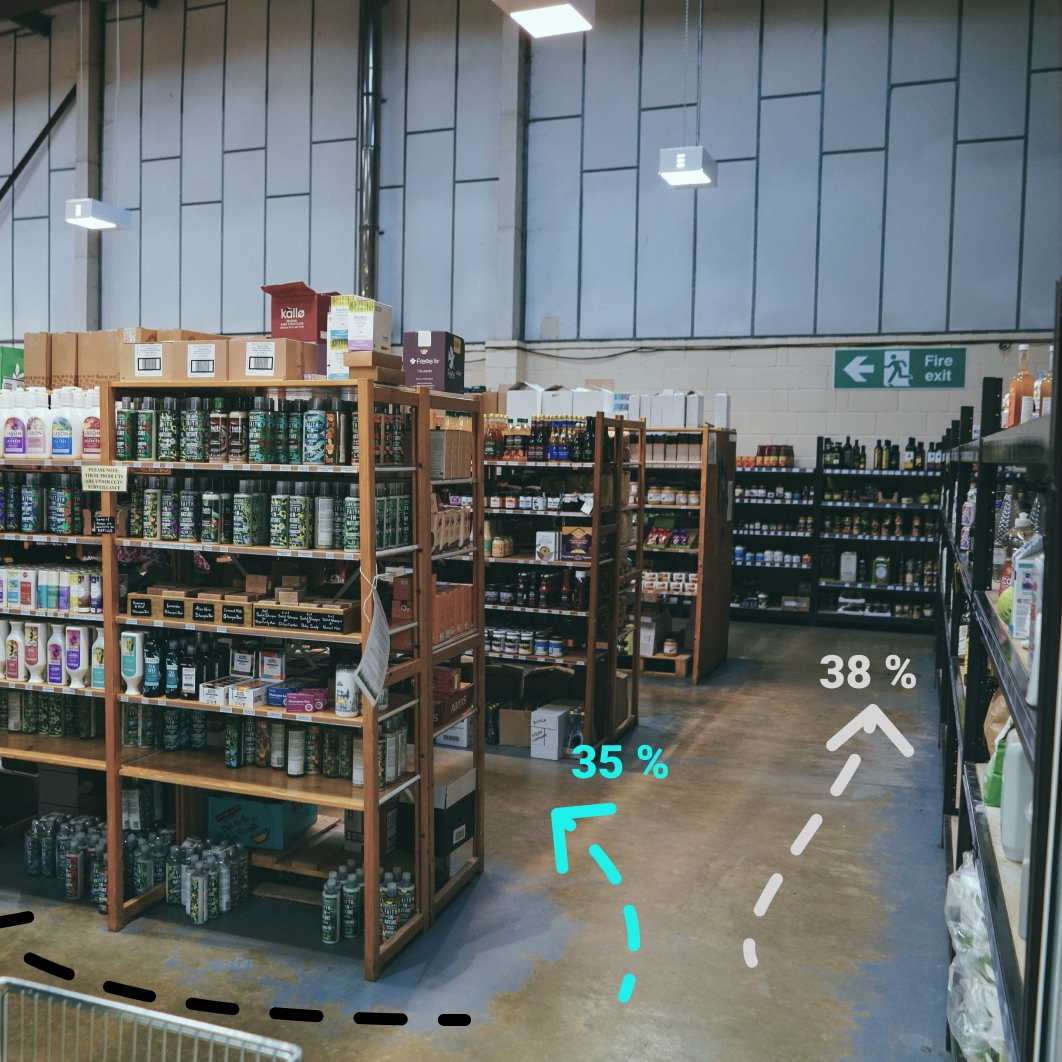
Shelf Management 101: Tips, Tricks, and Best Practices
In the ever-evolving landscape of the retail industry, the key to staying competitive lies in a deep understanding of customer behavior. Far from being just a beneficial strategy, it’s now an absolute imperative. The emergence of advanced analytics technologies and a heightened focus on creating personalized shopping experiences has brought customer behavior insights to the forefront of retail strategy. Leveraging these insights for intelligent retail space management is more than just a tactical move; it’s a transformative approach that significantly influences sales growth. This strategy extends beyond simple observational tactics. It involves the strategic harnessing and application of data to revolutionize the operational dynamics and customer appeal of a retail space.
By integrating data-driven insights into every aspect of store management, retailers can tailor their environments to better meet the evolving needs and preferences of their customers. This methodical approach not only elevates the shopping experience but also strategically positions the store in a way that naturally encourages more sales. In this context, understanding customer behavior becomes a multi-dimensional effort. Retailers are not just looking at what customers buy, but also at how they navigate the store, what areas they frequent, the times they prefer to shop, and the types of displays or promotions that catch their eye. This comprehensive view of the customer journey within the store allows for a more effective design and organization of retail spaces, ensuring that every element, from product placement to checkout counters, is optimally aligned with customer behavior patterns.
The end goal of this approach is clear: to create a shopping environment that not only attracts customers but also intuitively guides them towards products they’re likely to purchase, thereby increasing overall sales. In an era where customer preferences can shift rapidly, the ability to swiftly adapt retail spaces based on reliable customer behavior data is not just advantageous – it’s essential for any retailer looking to thrive in the dynamic world of retail.
Understanding the Customer
The journey towards effectively leveraging customer behavior in the retail sector begins with a comprehensive understanding of the customer base. Knowing who the customers are, what they desire, and how they engage in shopping activities is crucial. This process necessitates a deep dive into a variety of data sources, each offering a unique perspective on customer habits and preferences. Sales transaction records are a treasure trove of information, revealing what items customers are buying, how often they make purchases, and the average spending per visit. This data helps paint a picture of overall shopping trends and product popularity. Loyalty programs offer another layer of insight, particularly into the behavior of repeat customers. These programs not only encourage customer retention but also provide valuable data about individual shopping patterns, preferences, and even response to certain promotions or discounts.
In the digital age, online shopping patterns are equally telling. Analysis of online consumer behavior provides insights into the products customers are searching for, the time they spend on various product pages, and the overall journey they take from browsing to purchasing. Moreover, in-store foot traffic monitoring plays a pivotal role in understanding how customers physically navigate through the retail space. By utilizing technologies like retail people counters and footfall analytics, retailers can gain a clear understanding of peak shopping hours, the most frequented areas of the store, and how different store layouts and product placements influence shopping paths.
By synthesizing information from these diverse sources, retailers can build a comprehensive profile of their customer base. This profile includes not just demographics but also behavioral tendencies, preferences, and shopping habits. With this holistic understanding, retailers can make informed decisions about store layout, product assortment, marketing strategies, and customer engagement tactics, ultimately leading to a more personalized and effective shopping experience that resonates with their customers.
Retail Space Management
With these insights, retailers can begin to manage their space more effectively. The arrangement of aisles, the placement of products, and the overall store layout can all be optimized to align with customer behavior. For instance, if data reveals that customers tend to start their shopping journey in a particular section of the store, placing high-demand or high-margin products in those areas can drive impulse purchases. Similarly, understanding that certain products are often bought together can lead to strategic product placement, making it easier for customers to find what they need and encouraging additional purchases.
Personalized Experiences
Equipped with a deep understanding of customer behavior, retailers are well-positioned to manage and optimize their retail space more effectively. The insights gleaned from the data allow for strategic adjustments to the store’s physical layout, enhancing both the shopping experience and the store’s profitability. One key area of focus is the arrangement of aisles and the placement of products. Data-driven insights can inform which sections of the store attract the most foot traffic and where customers typically begin their shopping journey. For example, if analytics indicate that a significant portion of customers gravitate towards a specific area upon entering the store, it makes strategic sense to place high-demand or high-margin products in that zone. This strategic positioning not only increases the visibility of these products but also capitalizes on the natural flow of customer movement, potentially driving impulse purchases. Moreover, the relationship between different products can be leveraged to further refine product placement. Through data analysis, retailers can identify products that are frequently purchased together. By strategically placing these items near each other, the store can facilitate a more convenient and intuitive shopping experience for the customer. This ease of finding related products can encourage customers to make additional purchases they might not have considered otherwise.
The overall store layout can also be optimized based on customer behavior insights. For example, if data shows that certain areas of the store are less frequented, retailers might consider revising their layout to make these areas more accessible or attractive to customers. Alternatively, these insights might be used to create more engaging displays or interactive sections in parts of the store that see higher traffic, further enhancing customer engagement and satisfaction. In essence, the application of customer behavior data in retail space management is a powerful tool for retailers. It allows them to create a store environment that is not only visually appealing and easy to navigate but also strategically aligned with the way customers shop. This alignment can lead to a more enjoyable shopping experience for the customer and, in turn, higher sales and greater profitability for the retailer.
Technology Integration
The integration of technology into retail space management marks a significant advancement in how retailers can utilize customer behavior insights. Modern technologies, such as heat maps from footfall analytics, beacons for personalized offers, and augmented reality (AR) features, are not just tools for efficiency; they are catalysts for creating a more engaging and interactive shopping experience. Heat maps generated from footfall analytics offer a vivid visualization of where customers spend the most time within a store. This technology tracks and aggregates customer movements, highlighting ‘hot spots’ of high activity and areas that are less frequented. By analyzing these heat maps, retailers can identify which sections of their store draw the most interest and which might need a layout or merchandise adjustment. This information is critical for optimizing the arrangement of aisles, the placement of key products, and even the positioning of promotional displays to align with customer flow patterns.
Beacons represent another leap forward in personalizing the retail experience. These small devices use Bluetooth technology to communicate with smartphones within their range. Retailers can program beacons to send targeted offers and messages directly to a customer’s smartphone as they navigate through the store. For instance, a customer browsing in the shoe section can receive a notification about an ongoing sale on footwear. This level of personalization not only enhances the customer’s shopping experience but also increases the likelihood of purchase. Augmented reality (AR) adds an innovative layer to the customer experience, particularly in sectors like fashion and home decor. AR technology enables customers to virtually try on clothing or visualize how a piece of furniture would look in their home. This immersive interaction allows customers to make more informed purchase decisions and reduces the likelihood of returns, thus enhancing overall customer satisfaction and loyalty.
These technologies, rooted in deep customer behavior insights, are redefining the shopping experience. They offer a more customized, interactive, and immersive experience, catering to the modern customer’s desire for engagement beyond the traditional shopping methods. By adopting these innovative solutions, retailers can create a more dynamic and responsive retail environment that not only meets but anticipates the needs and preferences of their customers.
Conclusion
In today’s retail industry, success hinges not just on what you sell, but on how you sell it. The focus has shifted from mere transactions to creating memorable shopping experiences, deeply rooted in understanding and responding to customer behavior. Leveraging customer behavior insights for intelligent retail space management has become paramount in this context. It’s about crafting a shopping environment that resonates with customers, drawing them in, and fostering loyalty. This approach requires a dynamic adaptation of retail spaces, constantly evolving to meet customer expectations and preferences. By doing so, retailers don’t just attract customers but create an engaging, immersive environment that keeps them returning. It’s this transformative strategy that sets apart thriving retailers in a highly competitive marketplace, turning stores into destinations where every visit becomes an experience in itself.
Related Post
Tags
Keywords
Tags
Resources
© 2020-2024 Link Retail. All rights reserved.
